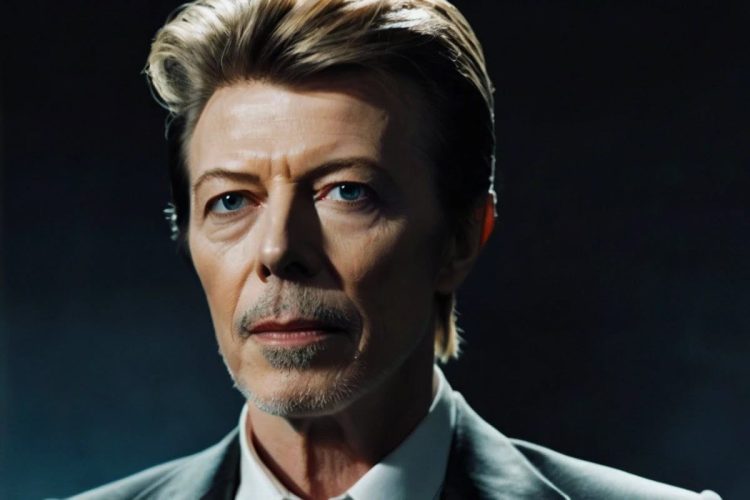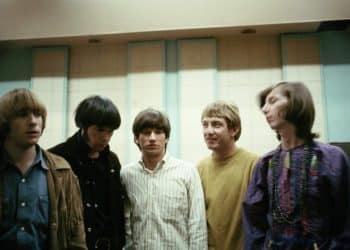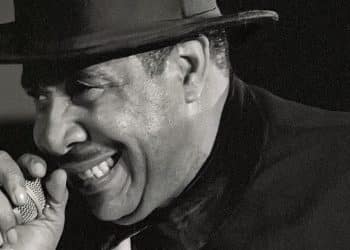David Bowie, the Starman who fell to Earth, was not just a musician; he was a cultural icon, a trailblazer, and a shapeshifter whose influence spanned decades. Known for his chameleonic ability to reinvent himself and his music, Bowie left an indelible mark on rock, pop, and the very fabric of modern artistry. From his early days as Ziggy Stardust to his later, introspective work, Bowie captivated the world with his daring creativity, theatrical performances, and poignant lyrics. His songs are more than music—they’re moments in time, encapsulating everything from the glittering rebellion of glam rock to the introspective depths of experimental soundscapes.
In this article, we’ll take a journey through the top 10 most popular David Bowie songs of all time—tracks that defined careers, inspired generations, and continue to resonate with fans old and new. Whether it’s the cosmic allure of “Space Oddity,” the anthemic power of “Heroes,” or the genre-defying brilliance of “Let’s Dance,” these songs showcase Bowie’s genius in all its glory. So, put on your red shoes, turn up the volume, and join us as we celebrate the music of a legend who truly was out of this world.
1. Space Oddity (1969)
David Bowie’s “Space Oddity” was more than just a song—it was a moment in time. Released just nine days before the Apollo 11 moon landing in 1969, the track captured the world’s imagination with its haunting tale of Major Tom, a fictional astronaut drifting alone in the vastness of space. With its haunting blend of acoustic guitar, stylized studio effects, and the eerie tones of a Mellotron, the song instantly set itself apart. Bowie’s gentle, melancholic vocal delivery gave a human face to the lonely journey, creating a sense of cosmic wonder tinged with existential dread.
The track’s storytelling was groundbreaking, turning a rock song into a cinematic narrative. It wasn’t just about space travel—it was a metaphor for isolation, disconnection, and the fragility of the human condition. Major Tom’s calm acceptance of his fate struck a chord with a generation grappling with change, technology, and the unknown. This was Bowie’s first major hit and hinted at the artistic risks and conceptual depths he’d explore throughout his career. “Space Oddity” didn’t just introduce Bowie to the world—it launched him into the stratosphere as one of music’s most imaginative visionaries.
2. Life on Mars? (1971)
“Life on Mars?” is Bowie at his most cryptic, cinematic, and heart-wrenching. Featured on the 1971 album Hunky Dory, the song weaves surreal imagery with biting social commentary, all wrapped in one of the most stunning musical arrangements of Bowie’s career. The track opens with Rick Wakeman’s unforgettable piano intro—a mix of classical drama and pop flair—before Bowie’s vocals leap in with poetic disillusionment.
At its core, the song paints a portrait of a young girl trying to make sense of a chaotic world. She escapes into a movie theater, only to find the absurdity of what she sees reflected back in the world around her. With lyrics referencing Mickey Mouse, workers striking, and “the lawman beating up the wrong guy,” Bowie presents a collage of societal dysfunction and personal despair. Yet, amid all the confusion, the question hangs in the air—“Is there life on Mars?”—a metaphor for something better, something beyond.
Musically, it builds toward a glorious crescendo, a soaring climax that feels both triumphant and tragic. “Life on Mars?” is more than just a song; it’s a fever dream of 20th-century alienation, and a showcase of Bowie’s genius for turning chaos into high art.
3. Heroes (1977)
Few songs capture the spirit of defiance quite like “Heroes.” Released in 1977 as part of Bowie’s Berlin Trilogy, this anthem is steeped in emotion, romance, and a haunting kind of hope. Co-produced by Brian Eno, “Heroes” was recorded in West Berlin, and it’s famously inspired by a couple Bowie saw kissing near the Berlin Wall. In a city divided by ideology and politics, their embrace symbolized a quiet act of rebellion—and Bowie turned it into one of the most enduring love songs of all time.
The music is built on a hypnotic, building wall of sound driven by Robert Fripp’s searing, atmospheric guitar. Bowie’s vocals start subdued and gradually intensify, as if he’s fighting to be heard over the noise of the world. By the time he belts out the chorus—“We can be heroes, just for one day”—it feels like a rallying cry for anyone who’s ever clung to hope in impossible circumstances.
“Heroes” is about fleeting triumphs, about choosing love and courage even when you know it might not last. It’s the song of a moment, a whisper turned into a roar, and one of Bowie’s most timeless declarations of human resilience.
4. Starman (1972)
When “Starman” hit the airwaves in 1972, it wasn’t just a new single—it was the arrival of a new world. As part of The Rise and Fall of Ziggy Stardust and the Spiders from Mars, this track introduced the public to Bowie’s glittering, alien alter ego, Ziggy. The song’s narrative centers on an extraterrestrial being who beams messages of hope and salvation to Earth’s youth. But at its heart, “Starman” is a celebration of discovery, rebellion, and the transformative power of music.
The song begins with a relaxed, acoustic strum before blooming into a glam-rock anthem, complete with an infectious, sing-along chorus. Bowie’s lyrics are cryptic and whimsical, but the emotional core is clear: in a world that feels grey and conformist, there’s someone out there who understands, who sees you, who brings light. It was a beacon to the outsiders, the dreamers, the weird kids—and it still is.
His performance of “Starman” on Top of the Pops is now the stuff of legend. With his red hair, jumpsuit, and androgynous charm, Bowie captivated a generation and changed the face of pop culture. “Starman” wasn’t just a song—it was an invitation to be bold, different, and unapologetically yourself.
5. Let’s Dance (1983)
“Let’s Dance” was a massive stylistic pivot for Bowie, but it was also a masterstroke. Released in 1983 and produced by the legendary Nile Rodgers, the track was a commercial juggernaut that fused funk, pop, and rock into one irresistible package. At a time when Bowie was already a global icon, “Let’s Dance” showed that he could reinvent himself yet again—and conquer the mainstream without sacrificing his artistic edge.
The song kicks off with a punchy rhythm and a guitar line that’s both cool and urgent, played by a then-unknown Stevie Ray Vaughan. As the beat builds, Bowie’s voice commands with smooth authority, urging listeners to let go, dance, and live in the moment. It’s a party track on the surface, but like much of Bowie’s work, there’s more lurking beneath. The lyrics hint at vulnerability and even danger—“tremble like a flower”—as if the act of dancing is both an escape and a revelation.
“Let’s Dance” became one of Bowie’s biggest hits and helped define the sound of the ’80s. Its success marked a new era for him, proving once again that Bowie wasn’t just ahead of the curve—he was the curve. Infectious, stylish, and unforgettable.
6. Rebel Rebel (1974)
“Rebel Rebel” is pure glam rock attitude in sonic form. Released in 1974 on the Diamond Dogs album, the track immediately grabs your attention with one of the most iconic guitar riffs in rock history. It’s raw, catchy, and unapologetically bold—just like the spirit of the song itself. Bowie was known for challenging norms, and “Rebel Rebel” became a fiery anthem of gender fluidity and youthful rebellion. With lyrics like “You’ve got your mother in a whirl / She’s not sure if you’re a boy or a girl,” he gave voice to those who didn’t quite fit into conventional boxes.
This was Bowie stepping into the role of rock provocateur, playing with identity and turning self-expression into something radical and liberating. While the track lacks the sci-fi gloss of Ziggy Stardust, it’s grounded in gritty, guitar-driven defiance that still packs a punch decades later. It became a rallying cry for misfits, punks, glam kids, and anyone who wanted to shake off the labels imposed on them.
Despite being one of Bowie’s less polished tracks musically, that roughness is part of its power. It feels live, loud, and loud-hearted. “Rebel Rebel” wasn’t just a song—it was Bowie passing the torch to a new generation of rule-breakers.
7. Changes (1971)
“Changes” is Bowie at his most introspective, but also his most prophetic. Released on Hunky Dory in 1971, this song became a sort of theme song for Bowie’s career—and for anyone who’s ever embraced the unpredictability of life. With its rolling piano intro and jazzy undertones, the track plays like a reflective conversation between Bowie and his own evolving identity. “Ch-ch-ch-changes” isn’t just a catchy hook—it’s a mantra.
At the time of its release, Bowie wasn’t yet the household name he would become, but this song hinted at the artistic restlessness that would define him. “Time may change me,” he sings, “but I can’t trace time.” That line speaks to the vulnerability of transformation—the uncertainty of leaving one version of yourself behind to become something new.
Bowie was always shapeshifting—musically, visually, emotionally—and “Changes” was his early declaration that he wouldn’t be pinned down. It’s a song that speaks to personal growth, cultural shifts, and the bittersweet nature of letting go. Though it wasn’t a massive hit at first, it grew in stature alongside Bowie himself. Today, “Changes” feels timeless: a tender, witty, and deeply human ode to the inevitable.
8. Ashes to Ashes (1980)
When Bowie released “Ashes to Ashes” in 1980, it felt like a revelation. Not only was it a return to the Major Tom story from “Space Oddity,” but it was also an emotional reckoning—a surreal confession cloaked in synths, shadows, and stunning visual style. Taken from the album Scary Monsters (and Super Creeps), the track was both a nostalgic callback and a bold step into Bowie’s new sonic direction.
The song finds Major Tom no longer a romantic space hero but a “junkie, strung out in heaven’s high,” a haunting line that flips the earlier myth on its head. Bowie wasn’t just reimagining a character; he was reflecting on his own struggles with addiction and identity. The lyrics are cryptic and layered, jumping from personal revelation to futuristic parable with each verse.
Musically, “Ashes to Ashes” was ahead of its time. Its dense, electronic production—with eerie synth textures and a pulsating bassline—laid the groundwork for new wave and electronic music to come. But it’s the haunting melody and Bowie’s hushed, almost eerie vocals that really stay with you.
The accompanying music video was just as groundbreaking, visually surreal and artful—an extension of Bowie’s identity as a master of reinvention. This was Bowie facing his past and shaping his future all in one go.
9. Modern Love (1983)
“Modern Love,” from Bowie’s 1983 Let’s Dance album, is a paradox in motion—a joyful, danceable track that’s actually filled with existential anxiety. From the opening piano stabs to the relentless rhythm that drives it forward, the song is an infectious blend of rock, pop, and gospel influences. But don’t let the upbeat tempo fool you. Lyrically, it’s Bowie at his most skeptical, exploring themes of isolation, doubt, and the confusing contradictions of romance in a fast-moving world.
Bowie sings of craving connection but finding it elusive—“I know when to go out / I know when to stay in / Get things done.” The song navigates the push and pull of desire and independence, tradition and freedom. The gospel-inspired backing vocals add layers of irony, reinforcing the idea that even faith or cultural norms can’t provide clear answers.
What makes “Modern Love” so effective is its juxtaposition. It makes you want to dance, even as it makes you think. It became a massive hit and remains one of Bowie’s most beloved tracks, in part because it captures the chaos of love and life in the modern age. It’s the soundtrack for questioning everything—while still shaking it on the dance floor.
10. The Man Who Sold the World (1970)
Mysterious, brooding, and endlessly intriguing, “The Man Who Sold the World” is a track that’s fueled decades of interpretation. Released as the title track of Bowie’s 1970 album, the song deals with themes of identity, duality, and existential crisis. With cryptic lyrics and an eerie melody, Bowie tells the story of encountering a shadow version of himself—someone familiar, yet alien.
Set against a dark, almost psychedelic rock backdrop with Mick Ronson’s gritty guitar lines, the song feels like a gothic tale whispered from the edge of consciousness. “I never lost control,” the narrator insists, yet the tone suggests otherwise. It’s the kind of song that gets under your skin—not flashy, but deeply unsettling in the best way.
Though it wasn’t a major hit at first, “The Man Who Sold the World” gained a second life in the ’90s thanks to Nirvana’s acoustic cover during their MTV Unplugged performance. That version introduced the track to a new generation, but Bowie’s original remains hauntingly definitive.
It’s a song that leaves you with more questions than answers, echoing the internal battles we all face at some point. “The Man Who Sold the World” is Bowie’s poetic mirror held up to himself—and to us.









